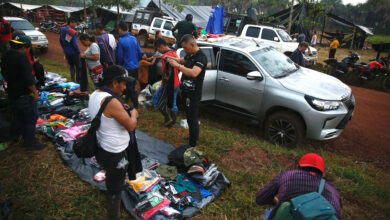No justice for victims of Indian caste-based massacre 25 years later

By Moncho Torres
Laxmanpur-Bathe, India, Dec 1 (EFE).- On Dec. 1, 1997, Hindu upper caste radicals armed with guns and machetes killed 58 villagers in north India, most of them members of the marginalized Dalit community, whose quest for justice remains unfulfilled even 25 years later.
The village of Laxmanpur-Bathe, which borders the Sone river and is accessible only by a mud road, is in the state of Bihar and is divided into separate colonies of “upper” and “lower castes” or “untouchables,” with the latter being the poorest section of the community
On the fateful day, in the evening hundreds of armed members of Hindu upper caste militia Ranvir Sena entered the Dalit neighborhood of the village and began to attack the residents indiscriminately.
“They were very quick, they slaughtered everyone with guns and machetes, in less than half an hour,” Laxman Rajvanshi, an elderly man who lost his wife, a daughter and daughter-in-law in the massacre, told EFE.
“First they shot them and then those who were still breathing, they slit their throats. There was killing all around,” he said, describing how six members of a family were killed in a neighboring house.
According to the most widely offered explanation of the massacre, the militia – formed by upper caste landlords – wanted to teach a lesson to Dalit peasants who had been demanding higher wages.
Laxman, who is 70-years-old and hard of hearing, met this reporter close to a monument- erected by the communist party – dedicated to the victims.
The memorial is a simple red-painted block that mentions the names and ages of the 58 people who were killed, with the youngest victim being just one-year-old.
The elderly man is the main witness to the massacre, and later reconstructs the events of the day in his house, the last one on the path leading to the river path from which the assailants had arrived.
Laxman said that he was hiding behind the boundary wall of his house – an earthen one back then – when the attackers arrived, kicked open the door and forcibly took the women out. They were shot and killed in the patio immediately afterwards.
“If I had tried something, they would have killed me too,” he said.
Many of the victims were women and children, as initially the families thought that the attackers were only looking for the men and would leave the rest alone.
Bimlesh Rajvanshi, who was 10-years-old at the time, was shot at and left for dead after the bullet scraped his right cheek. His father, two brothers and their wives were killed on the spot.
“They still threaten to kill me after 25 years, I still hold that fear, of not knowing if they will kill me someday. I am the last person left in my family,” said the man, whose mother had died of natural causes before the massacre.
The victims know many of the attackers – as Laxman recites many of their names – who continue to threaten the witnesses to try and prevent them from testifying.
“We’ve killed 58 still got no punishment, and now killing one more will do nothing either,” they are quoted as saying by both Laxman and Bimlesh.
The trial formally began only in 2008 after being delayed for 11 years, and by then 38 of the 91 witnesses had turned hostile according to a report by the nonprofit National Dalit Movement for Justice.
Eventually 44 people were tried for the murders, and while some of the accused died during the proceedings, in 2010 a Patna court convicted 26 people of murder, criminal conspiracy and atrocities, slapping the death penalty on 16 of them and giving life terms to the rest.
However, in 2013, to many’s surprise the Patna High Court acquitted all the accused, arguing – among other points – that it had been too dark to recognize the attackers and giving them “the benefit of the doubt,” NDMJ general secretary and lawyer Rahul Singh told EFE.





